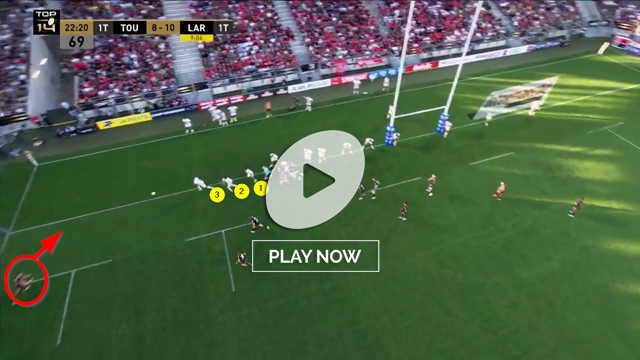One of the latest trial laws insists that it will no longer be possible to choose a scrum from a free-kick. The ball will have to be tapped or kicked instead. This law-trial is likely to have some significant consequences close to the opposition goal-line, where defending sides might find ways to ‘opt out’ of a prolonged scrummaging contest.
A smart and extensive repertoire of tapped penalty moves may prove to be the answer to the new question. Teams like Jake White’s Bulls have been using subtle offloads and changes of direction over the past couple of seasons:
Both clips contain some finesse, over and above a pure power-play. Their success depends on drawing an initial defensive over-reaction, dragging the D in one direction before hitting the space it has just vacated.
The latest moves have amplified this tendency further, with Toulouse scoring a seminal two-phase try versus La Rochelle in their recent Top 14 semi-final. On first phase, a three-man forward pod shifts over the open-side just before the tap, and the defence is dragged towards the posts:
Look at the damage the quick late shift has done to the Rochelais defence in a snapshot from overhead:

The pull towards the wide side of the field has left the solitary attacker on the Toulouse left in acres of space, so that he is even able to take a looping pass and step inside the desperate cover to score:
Summary
The long pass from Antoine Dupont is dropping at Blair Kinghorn’s feet, but he has ample time to gather the ball safely, cut back and dot down. We will undoubtedly see a lot more creativity injected into the armoury of short-range moves now that the prospect of repeat scrums looks to have been neutered by the new law-trial forbidding scrums called directly from a free-kick.













.jpg)

.jpg)






